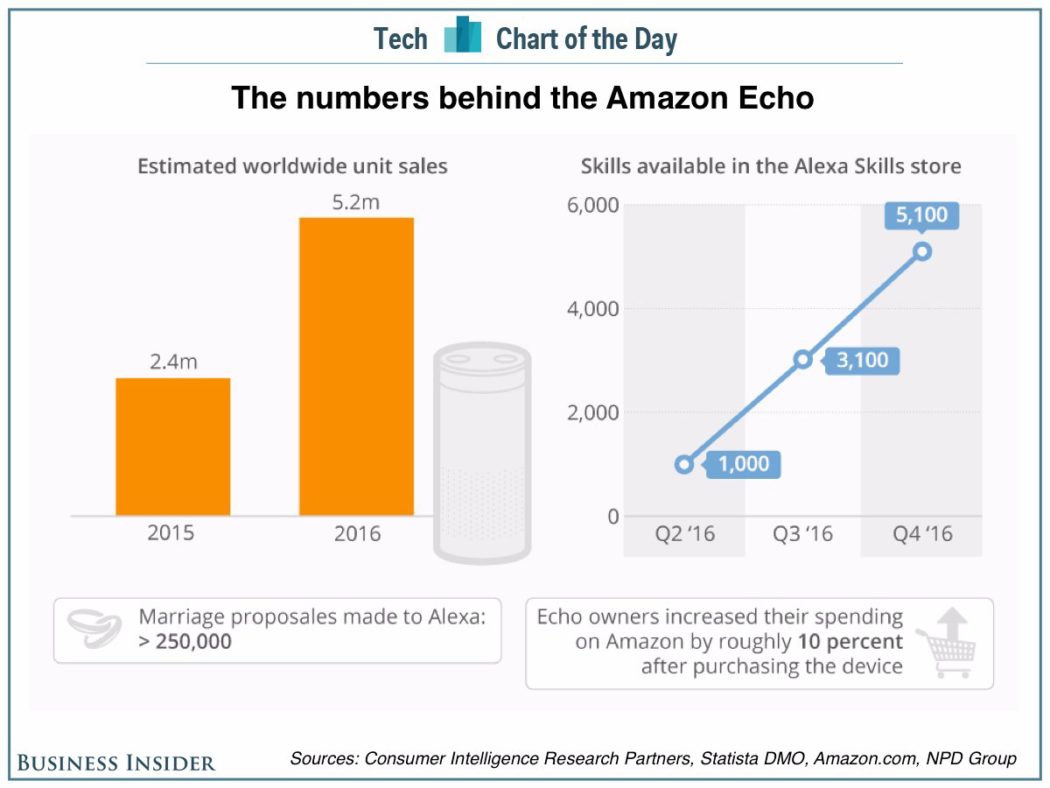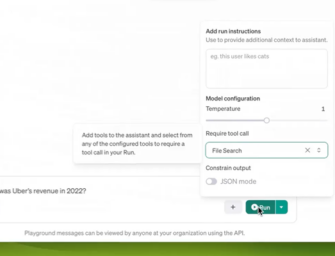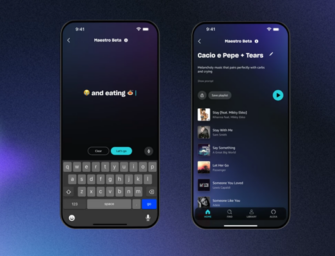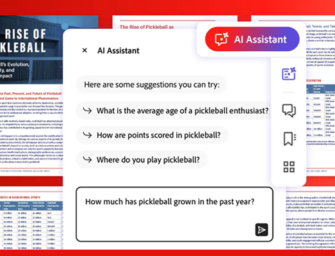Analysis – 1.18 Amazon Echos Per Alexa Household
For those of you keeping score of the many estimates of Amazon Echo unit shipments, it increasingly appears that the late December Voicebot estimate of seven million shipped was low — or we could call it conservative. However, an analysis of three different data sources enables us to estimate that 7.85 million Amazon Echos have shipped since 2014 and that Echo households average of 1.18 devices each.
Business Insider – 5.2 Million Echos Shipped in 2016
Business Insider reported earlier that Amazon shipped 5.2 million Echo units worldwide in 2016 on top of 2.4 million sold in 2015. The Echo had limited availability to prime members in 2014 and the total number is assumed to be a few hundred thousand for that year.
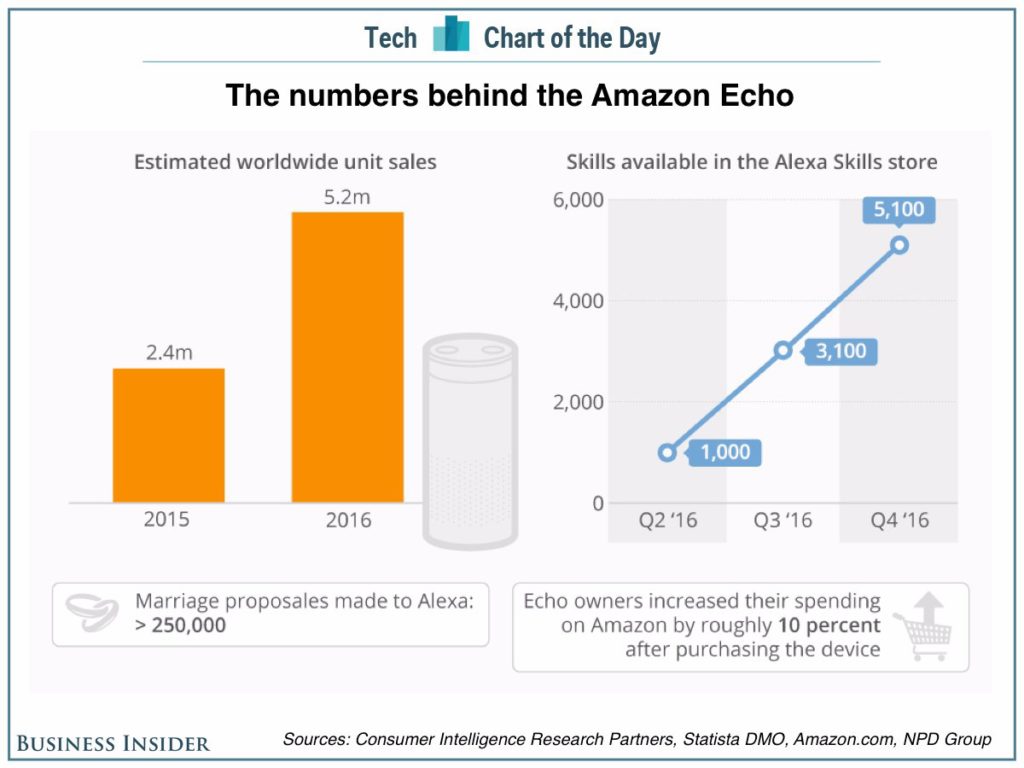
So What is the Total Number of Devices in Use?
The Business Insider numbers suggest that there at least 7.6 million Echo households worldwide. In this case worldwide means the U.S., U.K. and Germany, the only countries where the Echo was sold in 2016. It is reasonable to assume the 2014 numbers add at least 200,000 to this number bringing the total Amazon Echo devices in circulation close to 7.8 million. Add in the 500,00 Google Home units that Evercore estimates were sold in Q4 2016 and you get about 8.3 million home-based voice assistants in use.
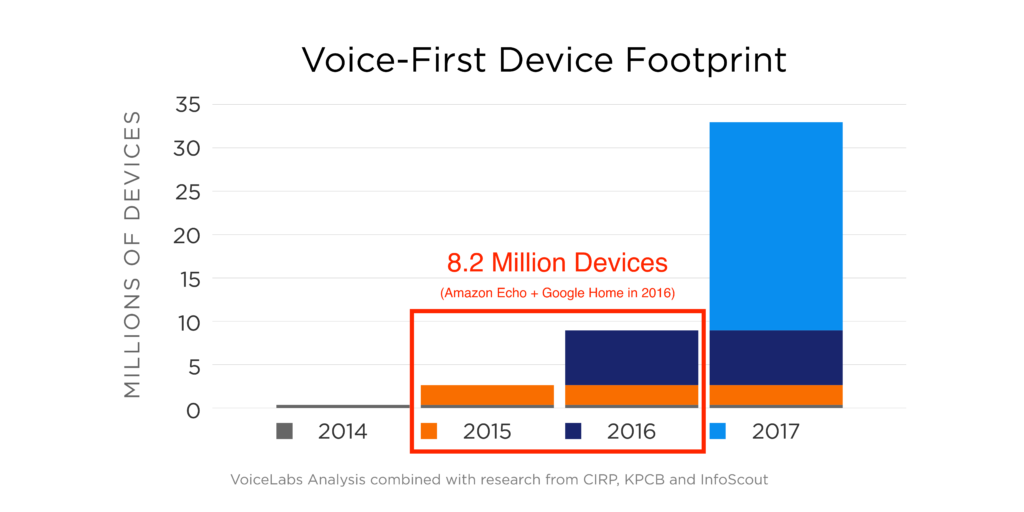
This aligns well with the VoiceLabs estimate of 8.2 million total voice-first units shipped in 2015-2016. If we add in 200,000 to that figure to account for 2014, we get 8.4 million total. Subtracting Google Home numbers puts us at 7.9 million, just 100,000 more than the Business Insider estimate. Okay, so a lot of simple math here, but we have two sources suggesting total sales of Amazon Echo devices to date likely range from 7.8-7.9 million. That’s a pretty tight range. The only potential issue with these estimates is that they reference a common source, CIRP which may or may not be accurate. With that said, VoiceLabs also consults KPCB and Infoscout and Business Insider refers to NPD, Statista and Amazon.com. Without better guidance from Amazon, the approaches and cross reference against multiple sources suggests both of these analyses are based on reasonable assumptions.
Accenture Data Supports the Findings with a Twist
We have one more data point to add into the mix from Accenture. Its 2017 Digital Consumer survey found that 4% of U.S. consumers have a home-based voice assistant. Since Accenture is only surveying adults we start from a U.S. population of 249 million which gives us 9.95 million people with access to a device. However, home-based voice assistants like the Echo are used by households, not individuals. U.S. Census data suggests that an average household contains 2.64 people, but that includes children and our original numbers were for adults only. The average adults per household is not reported, but evaluating house populations for single, single parent and married households we find a weighted average of 1.49 adults per household. That gives us 6.68 million units in the U.S. When we add the Voicebot estimate of 450,000 units sold in the UK and Germany in 2016, we arrive at just over 7.1 million units. Again we are back at the original Voicebot estimate.
However, the Accenture number would also include Google Home sales and we want to isolate Echo sales for this analysis. So, we are back down 6.63 million Amazon Echo units in circulation. Taking the mid-point of the Business Insider and VoiceLabs analysis of 7.85 million Echos sold suggests we are missing 1.22 million units. What could account for the difference? Multiple Echo devices in a single home. The Accenture question is about access to a home-based voice assistant and not how many devices per person.
1.18 Echos Per Alexa Household
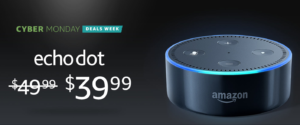 By dividing 7.85 million Amazon Echo units sold by 6.63 million households with a device, we arrive at 1.18 devices per Echo household. Another way of saying this is that 16% of Echo owners have more than one device. The introduction of the sub $50 Echo Dot last fall and subsequent discounting that brought it down under $40 no doubt led to the Dot stock-outs before Christmas and enticed many buyers to pick up more than one device.
By dividing 7.85 million Amazon Echo units sold by 6.63 million households with a device, we arrive at 1.18 devices per Echo household. Another way of saying this is that 16% of Echo owners have more than one device. The introduction of the sub $50 Echo Dot last fall and subsequent discounting that brought it down under $40 no doubt led to the Dot stock-outs before Christmas and enticed many buyers to pick up more than one device.
The implication is significant. There was some skepticism about whether consumers would adopt these devices in the first place. The sales growth seems to have settled that dispute. However, there was a remaining question about whether consumers would be interested in having more than one device for a communal area such as the kitchen or the family room. Apparently, the utility is great enough that 1 in 6 households believe having multiple Echo devices is beneficial.
What is Wrong About the Business Insider Chart?
The only criticism of the Business Insider chart above is the incorrect chart on the number of Alexa skills. If the author had been following Voicebot they would have known that total Amazon Alexa skills passed the 6,000 mark on December 12, 2016. ;^)
Follow @bretkinsella
Evercore Estimates 500,000 Google Home Units Shipped in 2016
Consumers: 46% use Voice Assistants in US, 68% Think AI Less Biased


